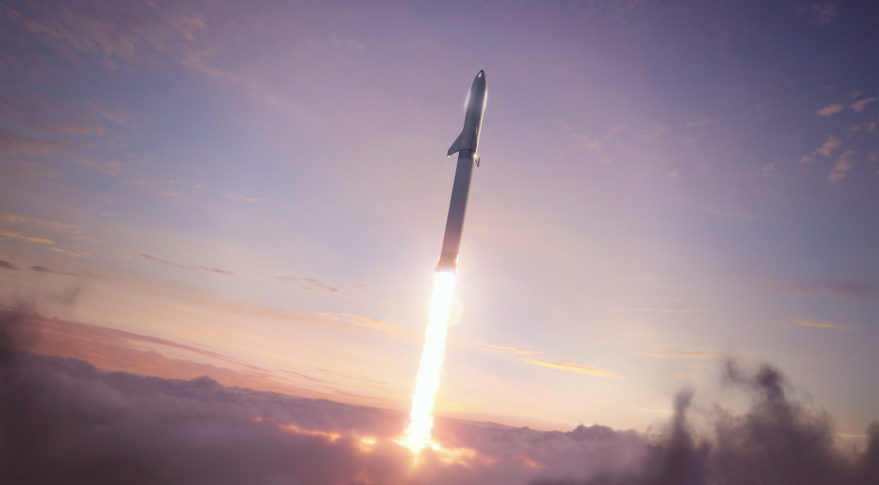SpaceX outlines first orbital Starship test flightby Jeff Foust — May 14, 2021 [SN]
 According to a SpaceX application to the FCC, the first orbital test flight of the Starship/Super Heavy system will involve a booster landing in the Gulf of Mexico and a Starship landing in the ocean near Hawaii, to mitigate the risk of a vehicle breakup during reentry. Credit: SpaceX
According to a SpaceX application to the FCC, the first orbital test flight of the Starship/Super Heavy system will involve a booster landing in the Gulf of Mexico and a Starship landing in the ocean near Hawaii, to mitigate the risk of a vehicle breakup during reentry. Credit: SpaceXWASHINGTON — SpaceX has disclosed details for the first orbital test flight of its next-generation Starship launch system, but the company is still far short of the regulatory approvals needed for the mission.
SpaceX filed an application with the Federal Communications Commission May 13 for special temporary authority for communications required to support a Starship test launch from the company’s Boca Chica, Texas, test site. The license would cover communications for what the company called an “experimental orbital demo and recovery test of the Starship test vehicle” launching from Boca Chica.
Source:
https://spacenews.com/spacex-outlines-first-orbital-starship-test-flight/